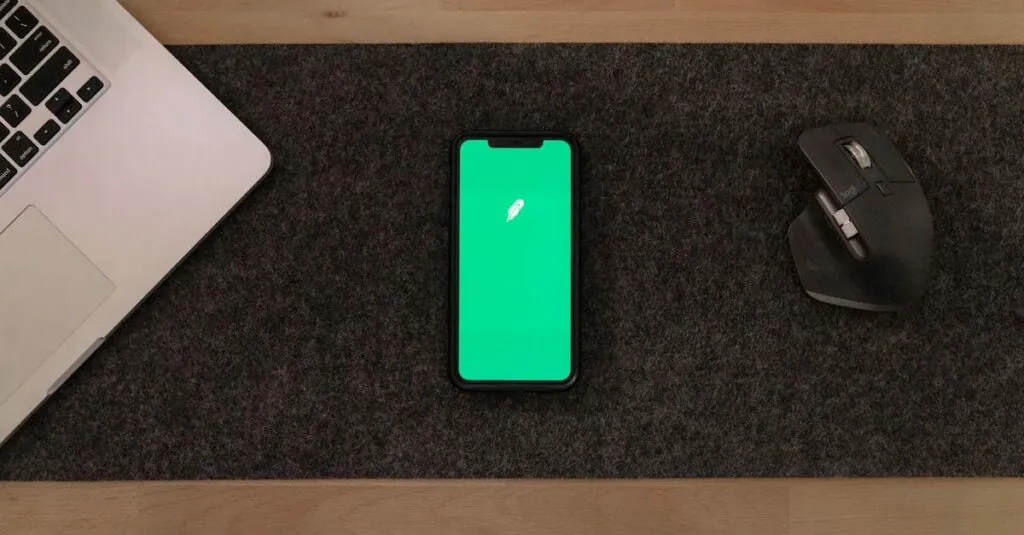Ever found yourself wrestling with tables in Google Docs? You’re not alone. Many users face the challenge of wanting to display two tables side by side, only to be met with frustration. It’s like trying to fit two elephants in a tiny car—awkward and a little chaotic. But fear not! With a few simple tricks, you can transform that digital wrestling match into a seamless layout.
Table of Contents
ToggleUnderstanding Google Docs Layout
Google Docs employs a flexible layout that allows users to customize document formatting extensively. Using tables ensures effective organization of information. A well-structured table enhances readability, making data comparison straightforward.
Two tables can coexist in a document, but positioning them side by side often poses challenges. Creating a balanced layout improves visual appeal. Opting for a table layout may initially seem complicated, yet simple adjustments facilitate the process.
Utilizing the “Insert” menu provides quick access to table options. Selecting “Table” from the drop-down offers a choice of dimensions to suit specific needs. Establishing appropriate dimensions streamlines the design phase.
Adjusting column sizes frequently helps achieve the desired space between tables. Resizing can occur through drag-and-drop actions or by entering exact measurements. Aligning the tables horizontally improves aesthetics and functionality.
Text wrapping settings play a crucial role in positioning tables. Experimenting with the “Wrap text” feature allows better control over how tables sit on the page. This option ensures that the surrounding text flows appropriately, maintaining document coherence.
Regularly reviewing the document layout will ensure all elements appear as intended. Previewing helps confirm that two tables display correctly side by side. Fine-tuning adjustments leads to a polished final product.
Applying these techniques aligns with the goal of producing clean, professional documents. Consistency in formatting ultimately enhances the user experience within Google Docs.
Methods to Place Two Tables Side by Side
Positioning tables side by side enhances document presentation. Several techniques streamline this process.
Using Table Properties
Accessing table properties offers crucial layout options. Users can right-click on a table to view the settings. Adjusting the table size fields allows control over width and height. Cells can expand or contract based on content. Modifying cell padding and spacing creates visual separation. These adjustments help maintain a clean appearance. Ensuring both tables fit within the page margins prevents layout issues. This method results in a more organized visual structure.
Adjusting Table Alignment
Table alignment plays a significant role in layout design. Align tables to left, center, or right according to preference. Select the table and navigate to the alignment options in the toolbar. Setting column width equally across tables contributes to symmetry. Users can also enable text wrapping for both tables to enhance fluidity. Previewing the document layout before finalizing provides clarity on alignment. These steps facilitate a balanced and professional appearance.
Practical Steps to Create Side-by-Side Tables
Creating side-by-side tables in Google Docs involves specific steps that lead to an appealing layout.
Inserting the First Table
To begin, navigate to the “Insert” menu at the top of Google Docs. Select “Table” and choose the desired dimensions by dragging to create the appropriate number of rows and columns. After creating the table, adjust the column widths to accommodate the data you plan to include. Formatting options like cell padding can enhance readability and visual appeal. By right-clicking on the table, users access additional settings to customize various properties, which contributes to overall design.
Inserting the Second Table
Next, repeat the table insertion process for the second table. Use the same “Insert” option to create another table of the same or different dimensions based on the information it will display. For optimal symmetry, ensure that both tables have aligned column widths. Adjust the position of the second table by clicking and dragging it next to the first. Enabling text wrapping around both tables allows text to flow seamlessly, enhancing the document’s visual structure. Regularly previewing the layout helps in finalizing the positioning and overall alignment of the tables.
Tips for Enhancing Table Presentation
Improving table presentation in Google Docs enhances readability and engagement. Adjusting column widths significantly contributes to visual uniformity. Use consistent cell padding to create a neat appearance across both tables. Selecting complementary colors for table borders aids in distinguishing data effectively.
Aligning tables consistently helps maintain an organized layout. Consider using alternative row colors to create visual separation within tables. Incorporate clear headings in each table to clarify the contents at a glance. Utilizing bold text for headings enhances emphasis and makes important information stand out.
Regularly previewing the document is crucial for assessing table alignment. Checking for equal spacing around tables ensures a balanced look on the page. Implementing snapshot images or icons can enrich table content, adding visual context. Adding bullets or numbering within cells improves information presentation and accessibility.
Avoid overcrowding tables with excessive information. Limit the number of columns to enhance the clarity of data presented. Using concise text entries maintains focus and prevents reader disengagement. Formatting cells to center or align text properly boosts overall readability.
Incorporating these methods can transform the appearance of tables. By applying these enhancements, individuals can create professional documents that effectively communicate their intended messages. Engaging, well-organized tables showcase data clearly and facilitate better understanding.
Mastering the art of placing two tables side by side in Google Docs can significantly enhance document presentation. By following the outlined methods and tips, users can create a visually appealing layout that improves readability and engagement.
With the right adjustments to table properties and alignment, achieving a professional look becomes straightforward. Regularly previewing the document ensures that the tables maintain their intended position and aesthetics.
By implementing these strategies, users can transform their documents into effective communication tools that clearly convey important information.





